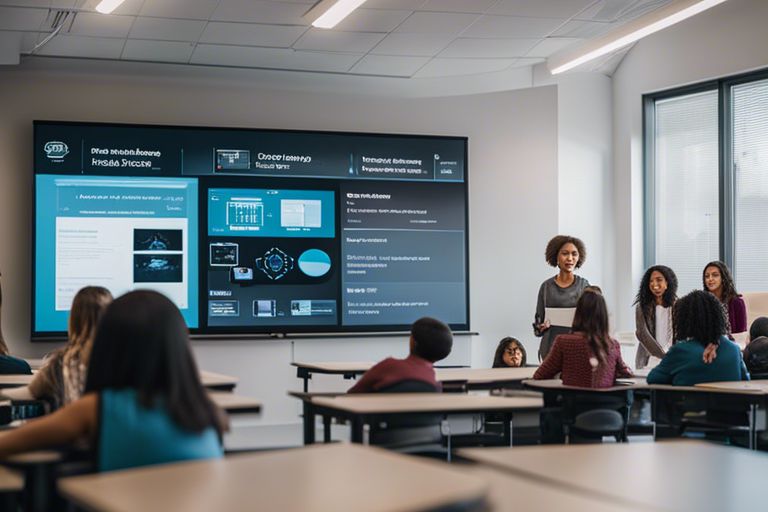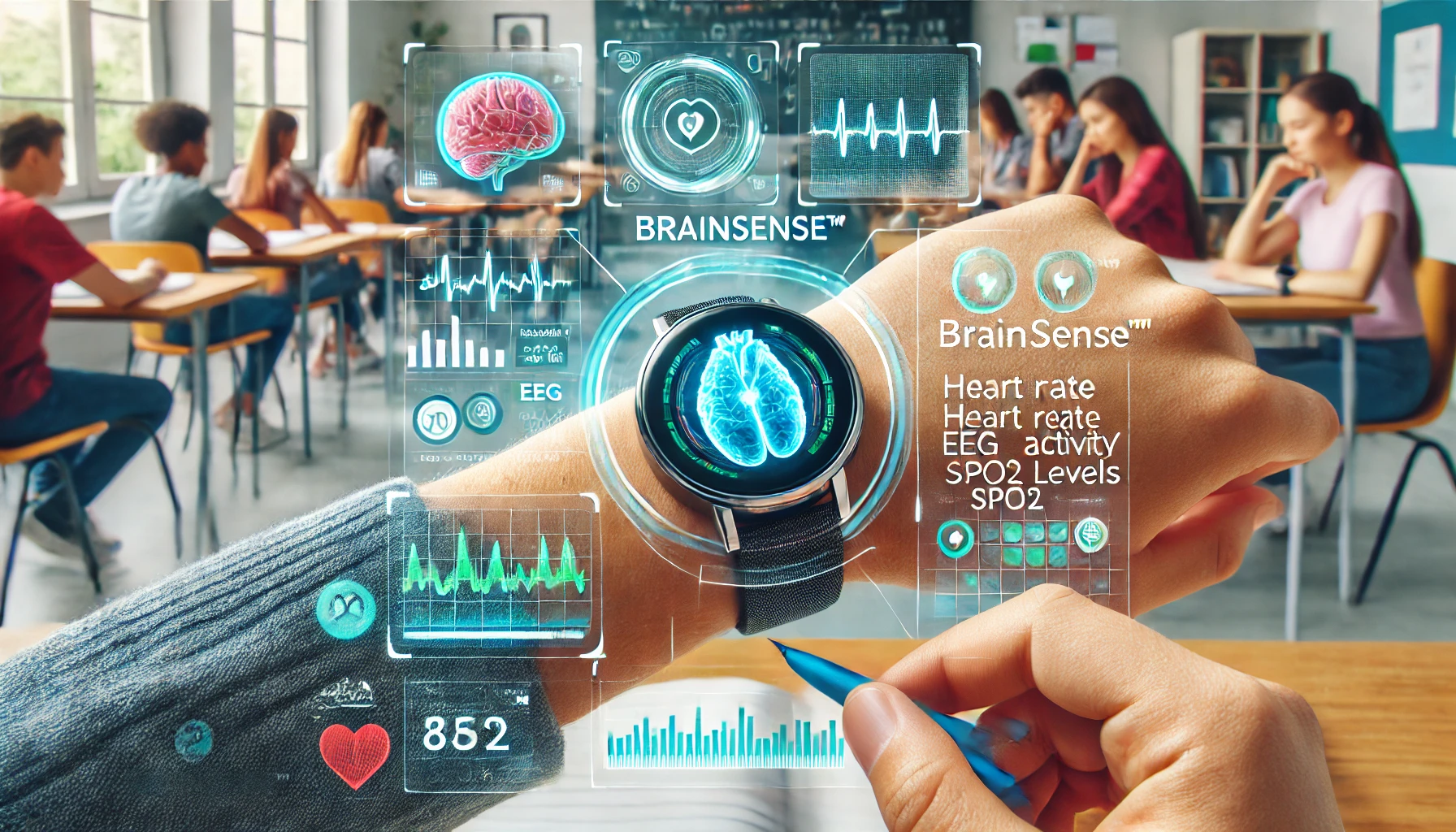Over the past few years, AI technologies have been revolutionizing various industries, including education. In order to effectively integrate these advancements into the classroom setting, teachers must navigate a complex landscape of tools and strategies. By understanding the benefits and challenges associated with AI in education, educators can harness the power of these technologies to enhance learning outcomes for their students.
Identifying the Benefits of AI Integration
Enhanced Personalization
With artificial intelligence technologies in the classroom, teachers can provide enhanced personalization for each student’s learning journey. AI algorithms can analyze individual student data and adapt teaching methods to cater to their specific needs. This level of customization allows students to learn at their own pace, focus on areas where they need improvement, and receive targeted support.
Increased Efficiency
For teachers, integrating AI technologies in the classroom can lead to increased efficiency in various aspects of their work. AI-powered tools can automate administrative tasks, such as grading and lesson planning, freeing up time for teachers to focus on interactive and engaging teaching activities. Additionally, AI can provide insights into student performance, allowing teachers to identify struggling students early on and intervene effectively.
Enhanced efficiency through AI integration can also enable teachers to collaborate more effectively with their peers, share best practices, and access a wealth of educational resources online. By leveraging AI technologies, teachers can streamline their workflows and create a more dynamic and engaging learning environment for their students.
Overcoming the Hurdles of AI Adoption
There’s no doubt that integrating AI technologies into the classroom comes with its challenges. Teachers may have concerns about the implications of AI in education, including fears about replacing human teachers, data privacy issues, and the lack of personalized learning experiences for students. Addressing Teacher Concerns is crucial in overcoming these hurdles and ensuring successful AI adoption in schools.
Addressing Teacher Concerns
On the journey to implementing AI in the classroom, it’s imperative to provide teachers with the necessary support and training to alleviate their worries about AI technologies. Educators need to understand that AI is not intended to replace them but rather to enhance their teaching practices. Another key aspect is to involve teachers in the decision-making process and demonstrate how AI can be a valuable tool in creating more engaging and effective learning environments.
Developing AI Literacy
With the rapid advancements in AI technologies, it is imperative to focus on developing AI literacy among teachers and students. Teachers need to be equipped with the knowledge and skills to effectively integrate AI tools into their curriculum. This includes understanding how AI can analyze student data to provide personalized feedback and support, as well as the ethical considerations surrounding AI use in education.
Selecting the Right AI Tools for the Classroom
The integration of AI technologies in the classroom can be a game-changer for teachers looking to create engaging and personalized learning experiences for their students. However, with the plethora of AI tools available, it is crucial for educators to select the right ones that align with their teaching objectives and student needs.
Language Processing Tools
The use of language processing tools can greatly benefit teachers in various ways. These tools utilize natural language processing to help students improve their writing skills, enhance reading comprehension, and even provide real-time feedback on language usage. By integrating language processing tools in the classroom, teachers can offer personalized support to students, identify areas for improvement, and track progress more efficiently.
Adaptive Learning Platforms
Adaptive learning platforms are AI tools that cater to each student’s individual learning needs by adjusting the difficulty level and pace of lessons based on their performance. These platforms offer personalized learning experiences, allowing students to progress at their own speed and receive targeted support in areas where they struggle. By incorporating adaptive learning platforms in the classroom, teachers can better address the diverse learning styles and abilities of their students, ultimately leading to improved academic outcomes.

Designing AI-Enhanced Lesson Plans
Despite the rapid advancements in AI technologies, designing AI-enhanced lesson plans can be a daunting task for educators. However, with careful planning and consideration, teachers can effectively integrate AI tools to enhance the learning experience for students.
Aligning AI with Learning Objectives
To effectively integrate AI technologies in the classroom, it is important for teachers to align the use of AI tools with the learning objectives of the lesson. By clearly defining the goals and outcomes they want to achieve, educators can choose the most suitable AI applications that will support and enhance the learning process. Ensuring that AI tools are directly contributing to the mastery of educational concepts will help in creating a cohesive and effective lesson plan.
Encouraging Student-Centered Learning
Any successful implementation of AI technologies in the classroom should prioritize student-centered learning approaches. Encouraging active participation and engagement from students will not only foster a deeper understanding of the subject matter but also empower students to take ownership of their learning journey. By incorporating AI tools that promote personalized learning experiences, teachers can cater to individual student needs and enhance overall learning outcomes.
This student-centered approach can revolutionize the traditional classroom dynamic, shifting the focus from a teacher-centered environment to one where students are actively involved in their own learning process. Empowering students to explore and engage with AI technologies not only prepares them for the digital age but also cultivates important skills such as critical thinking, problem-solving, and collaboration.
By intentionally designing AI-enhanced lesson plans that align with learning objectives and promote student-centered learning, educators can create a dynamic and enriching educational experience that prepares students for the future.
Fostering a Culture of Innovation
Encouraging Experimentation and Risk-Taking
For teachers to effectively integrate AI technologies in the classroom, it is vital to create an environment where experimentation and risk-taking are encouraged. Experimentation allows educators to explore the possibilities of AI tools and discover innovative ways to enhance learning experiences. Risk-taking involves trying out new methods and technologies, even if there is a chance of failure. By fostering a culture that values these traits, teachers can feel empowered to incorporate AI into their teaching practices.
Building Teacher Confidence
Culture plays a significant role in shaping teacher confidence when it comes to utilizing AI technologies in the classroom. Building Teacher Confidence involves providing professional development opportunities, ongoing support, and recognition for educators who embrace AI tools. For instance, creating communities of practice where teachers can share their successes and challenges with AI implementation can boost confidence and encourage collaboration.
Ensuring Equity and Inclusivity in AI-Driven Education
Addressing Digital Divide Concerns
To ensure equity in AI-driven education, it is crucial to address concerns related to the digital divide. Any disparities in access to technology and internet connectivity can widen existing educational gaps, creating barriers for students from marginalized communities. Any initiatives to integrate AI technologies in the classroom must take into account the diverse socio-economic backgrounds of students and strive to provide equal opportunities for all learners.
Promoting Culturally Responsive AI Integration
AIDriven education must prioritize promoting culturally responsive practices to ensure inclusivity and respect for diversity in the classroom. This involves integrating AI technologies that are sensitive to the cultural backgrounds and experiences of students, offering personalized learning experiences that resonate with their identities. By fostering a culturally responsive AI integration, educators can create a more inclusive learning environment where all students feel valued and represented.
This approach can help bridge cultural divides and promote empathy and understanding among students from different backgrounds. It is necessary to consider the cultural implications of AI-driven education to avoid reinforcing stereotypes or biases that may exist in the technology. Ultimately, a culturally responsive AI integration can enhance student engagement, foster a sense of belonging, and empower learners to succeed in an increasingly diverse world.
Leveraging AI for Real-Time Feedback and Assessment
Unlike traditional assessment methods, AI technologies offer the capability to provide real-time feedback to students, allowing for immediate identification of learning gaps and areas for improvement. Automating grading and feedback processes not only saves educators precious time but also ensures that students receive timely and personalized guidance to enhance their learning experience.
Automating Grading and Feedback
On the forefront of AI integration in classrooms is the automation of grading and feedback mechanisms. By utilizing AI-powered tools, teachers can streamline the evaluation process, providing students with instant feedback on their assignments and assessments. This not only speeds up the grading process but also enables educators to focus on analyzing the feedback data to tailor their teaching methods more effectively.
Enhancing Student Self-Assessment
For students, enhancing self-assessment capabilities through AI technologies can foster a sense of autonomy and accountability in their learning journey. AI-powered platforms can offer personalized recommendations for additional study materials or practice exercises based on students’ self-assessment results. This individualized approach empowers students to take ownership of their learning progress and build imperative skills for lifelong learning.
Real-Time Feedback and Personalized Learning
RealTime feedback provided by AI technologies has the potential to revolutionize the way students engage with course materials and assessments. By receiving immediate and individualized feedback, students can adjust their learning strategies in real-time, leading to more efficient skill development and academic growth. Additionally, AI can analyze patterns in student performance to offer personalized learning recommendations, catering to each student’s unique learning pace and preferences.
Creating AI-Powered Virtual Learning Environments
Many educators are exploring the potential of integrating AI technologies to create innovative virtual learning environments that revolutionize traditional teaching methods. These AI-powered environments offer a range of benefits, from personalized learning experiences to increased accessibility for students worldwide.
Immersive Learning Experiences
Experiences in AI-powered virtual learning environments are designed to provide students with immersive and interactive learning opportunities. By leveraging AI algorithms, these platforms can adapt to individual student needs, offering personalized feedback and tailored lesson plans. Students can engage with course materials in a dynamic way, enhancing their comprehension and retention of key concepts.
Expanding Access to Education
Access to education is a critical issue worldwide, and AI-powered virtual learning environments have the potential to bridge the gap for students in underserved communities. By offering online courses and resources, these platforms can expand access to quality education for learners who may not have access to traditional educational settings. This technology has the power to empower individuals from diverse backgrounds and geographic locations to pursue their academic goals.
Virtual learning environments powered by AI can also provide flexibility for students who are balancing work, family, or other commitments alongside their studies. The ability to access educational content remotely at any time can enhance the learning experience for those who may not be able to attend physical classrooms.
Developing AI-Driven Professional Development Opportunities
Now, as schools increasingly adopt AI technologies, it is crucial for educators to receive proper training and support to effectively integrate these tools into their teaching practices. Teacher Training and Support programs should focus on providing educators with hands-on experience with AI applications, opportunities for collaboration with experts in the field, and ongoing professional development to stay current with the latest advancements in AI technology.
Building AI Literacy Among Educators
The ability for educators to understand and utilize AI technologies in the classroom is crucial for maximizing their benefits. Building AI Literacy Among Educators can involve workshops, online courses, and resources that explain the basics of AI, how it can be integrated into lesson plans, and the ethical considerations surrounding its use in education. To ensure that educators are equipped to teach students about AI, it is important for them to have a strong foundation in AI concepts and applications.
Developing a comprehensive AI literacy program for educators can empower them to confidently incorporate AI technologies into their teaching practices, creating a more engaging and innovative learning environment for students. By providing educators with the knowledge and skills needed to effectively utilize AI in the classroom, schools can better prepare students for the future workforce where AI skills are increasingly in demand.
Addressing Ethical Considerations in AI Integration
Data Privacy and Security
Keep in mind that when integrating AI technologies in the classroom, data privacy and security are paramount. Educators must ensure that all student data is protected and secure to prevent any unauthorized access or breaches.
Transparency and Accountability
For effective integration of AI in education, transparency and accountability are vital. It is crucial for teachers to be aware of how AI systems make decisions and accountable for the outcomes produced by these technologies.
Understanding how AI algorithms work and being able to explain their rationale to students can help build trust and confidence in the technology.
Measuring the Impact of AI Integration on Student Outcomes
Quantifying the Effectiveness of AI Tools
The incorporation of Artificial Intelligence (AI) technologies in the classroom has the potential to revolutionize education by personalizing learning experiences and improving outcomes for students. All educators recognize the importance of measuring the impact of these AI tools on student performance. By collecting and analyzing data generated from AI platforms, teachers can gain valuable insights into student progress, engagement levels, and areas where additional support may be needed.
The utilization of AI tools like adaptive learning platforms and intelligent tutoring systems allows for real-time tracking of student learning trajectories. This data-driven approach enables teachers to tailor their instruction to meet individual student needs, ultimately leading to improved academic outcomes. By quantifying the effectiveness of AI tools through metrics such as student performance data, engagement metrics, and learning gains, educators can make informed decisions about the integration of these technologies in their classrooms.
Identifying Areas for Improvement
Measuring the impact of AI integration also involves identifying areas where improvement is needed to optimize student outcomes. Through ongoing assessment and feedback mechanisms embedded within AI tools, teachers can pinpoint specific areas where students may be struggling or where additional interventions are required. Outcomes data can reveal patterns of student performance that indicate the efficacy of AI tools in addressing learning gaps and enhancing overall academic achievement.
Building Partnerships for AI Integration
Collaborating with EdTech Companies
Not all teachers have the technical expertise to navigate the complexities of AI integration on their own. Collaborating with EdTech companies can provide teachers with the necessary tools, resources, and support to effectively implement AI technologies in the classroom. These partnerships can help bridge the gap between theory and practice, ensuring that educators have access to the latest innovations in AI.
Fostering Community Engagement
With community engagement, teachers can connect with parents, students, and other stakeholders to create a supportive ecosystem for AI integration in the classroom. By involving the community in the decision-making process, educators can ensure that AI technologies align with the values and goals of the school community. This collaborative approach fosters a sense of ownership and responsibility, leading to more successful implementation of AI in education.
Community engagement is important for building trust and transparency around the use of AI in the classroom. By involving parents and students in discussions about the benefits and potential risks of AI technologies, educators can address concerns and ensure that everyone feels heard and included in the decision-making process. This inclusive approach not only strengthens relationships within the school community but also promotes a culture of continuous learning and improvement.
Preparing Students for an AI-Driven Future
Developing Essential Skills for the AI Era
For your students to thrive in an AI-driven future, it is imperative to focus on developing vital skills that will set them up for success. In addition to traditional subjects, students should be equipped with critical thinking, problem-solving, creativity, and adaptability. These skills are crucial in navigating the ever-changing landscape of technology and AI.
Encouraging AI Literacy Among Students
AIDriven In today’s digital age, AI literacy is no longer a luxury but a necessity. It is vital to educate students on the basics of AI, including how it works, its applications, and its ethical implications. By fostering a deeper understanding of AI, students can make informed decisions and utilize AI technologies responsibly as they progress into an AI-driven world.
Developing a curriculum that incorporates AI concepts and encourages hands-on experience with AI technologies can empower students to become future-ready individuals who are adept at leveraging the potential of AI for innovation and problem-solving.
Final Words
The effective integration of AI technologies in the classroom is a challenge that requires careful consideration and planning. Teachers play a vital role in harnessing the power of AI to enhance learning experiences and prepare students for the future. By embracing new technologies, adapting teaching methods, and fostering a collaborative learning environment, educators can create a stimulating and engaging classroom that encourages critical thinking, creativity, and innovation.
The journey towards successfully integrating AI in education may be complex, but the rewards are certainly worth the effort. As teachers continue to explore innovative ways of incorporating AI technologies into their lessons, they will enable students to develop the skills needed to thrive in a rapidly changing world. By staying open-minded, informed, and proactive, educators can truly make a difference in preparing the next generation for the challenges and opportunities that lie ahead.
FAQ
Q: Why is it important for teachers to integrate AI technologies in the classroom?
A: Integrating AI technologies in the classroom can enhance personalized learning experiences for students and provide valuable insights for teachers to improve their teaching methods.
Q: How can teachers benefit from using AI technologies in the classroom?
A: Teachers can benefit from AI technologies by automating administrative tasks, analyzing student data to identify learning gaps, and creating personalized lesson plans for individual students.
Q: What are some examples of AI technologies that teachers can use in the classroom?
A: Some examples of AI technologies that teachers can use in the classroom include smart tutoring systems, virtual reality simulations, and AI-powered grading tools.
Q: How can AI technologies help in promoting student engagement and participation?
A: AI technologies can help in promoting student engagement and participation by providing interactive learning experiences, personalized feedback, and real-time assistance to students.
Q: What are the challenges faced by teachers in integrating AI technologies in the classroom?
A: Some challenges faced by teachers in integrating AI technologies in the classroom include lack of training, concerns about data privacy, and the need to balance technology with traditional teaching methods.
Q: How can teachers overcome the challenges of integrating AI technologies in the classroom?
A: Teachers can overcome the challenges of integrating AI technologies in the classroom by undergoing training programs, establishing clear guidelines for data privacy, and gradually integrating AI tools into their teaching practices.
Q: What is the future of AI technologies in education?
A: The future of AI technologies in education is promising, with advancements in machine learning, virtual reality, and personalized learning platforms revolutionizing the way students learn and teachers teach.




